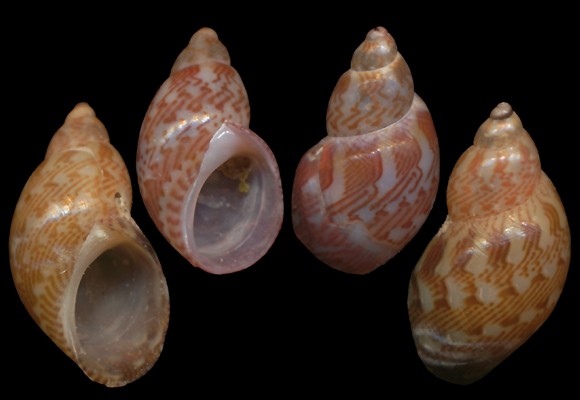
Infralittoral, pn Phanerogams; abundant on the leaves. Grazer. Original taxon: Turbo speciosus.
Shellgrit, Town’s beach, Isola Rossa, NW. Corsica. 8-9mm.
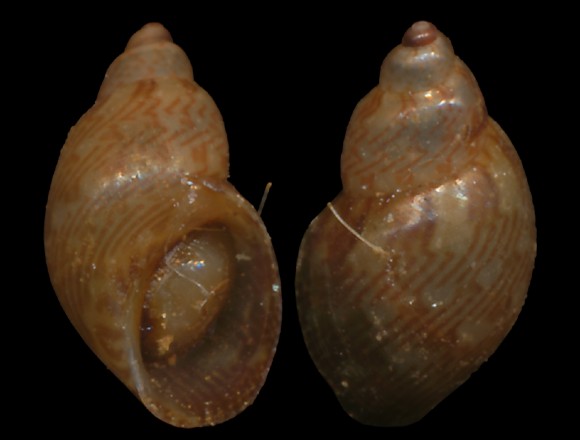
Under stones at 3-10m deep, Santa Ponça, Palma de Mallorca, Mallorca, Islas Balleares. 7mm. Typical pattern.
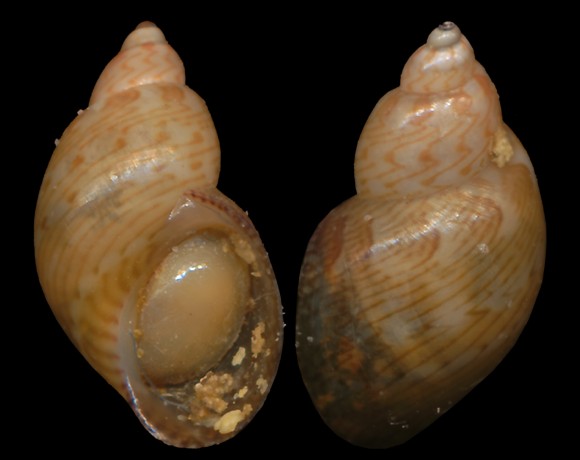
« General shape slender, with elevated spire and important development of last whorl. Whorls rounded, somewhat flattened at periphery, with impressed suture. Surface smooth and glossy, with indistinct growth lines. Shell material translucent in juvenile shells, tending to become opaque and porcellanous in adults (especially along the suture). Aperture oval, oblong, with a callus where the outer lip joins the preceding whorl. Inner lip closely appressed without any umbilicus or chink. » – S. Gofas: “The genus Tricolia in the eastern Atlantic and the Mediterranean”, Journal of Molluscan Studies (1982), 48, p.201.
Above and below:
7-8m deep, in Posidonia meadows, Pace, north of Messina, E. Sicily. 10-11mm.
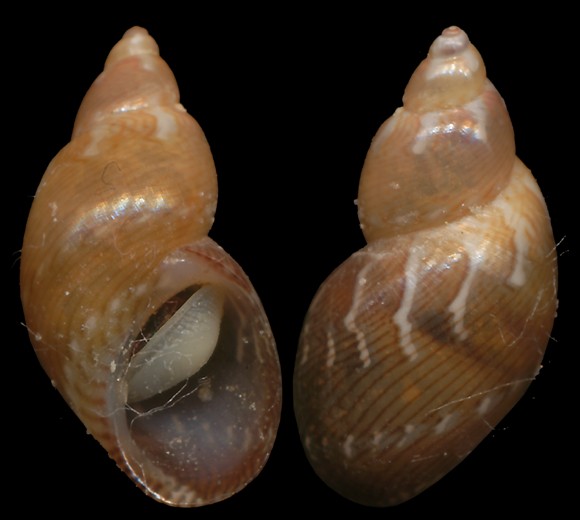
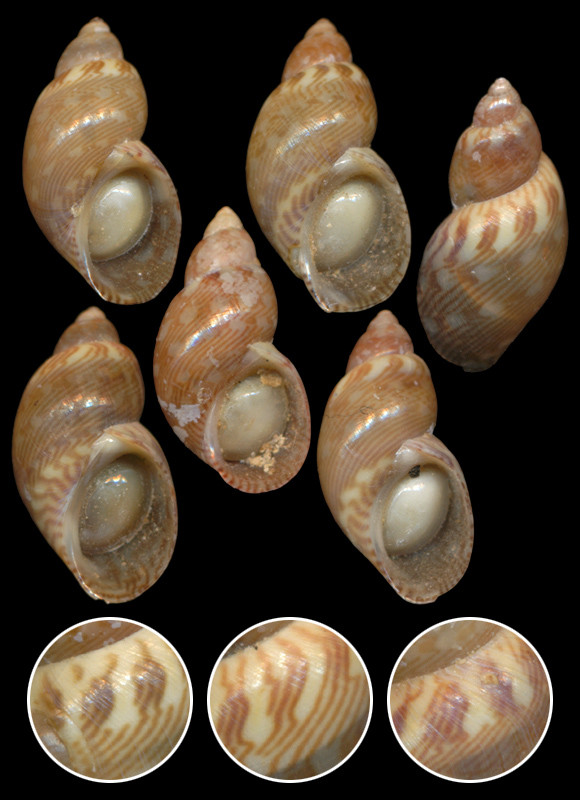
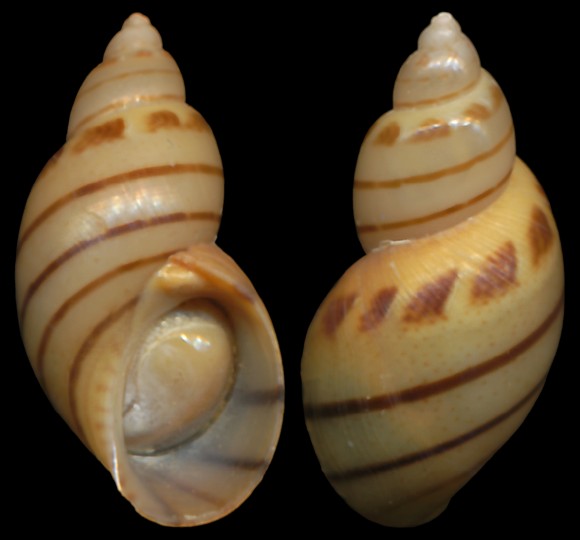
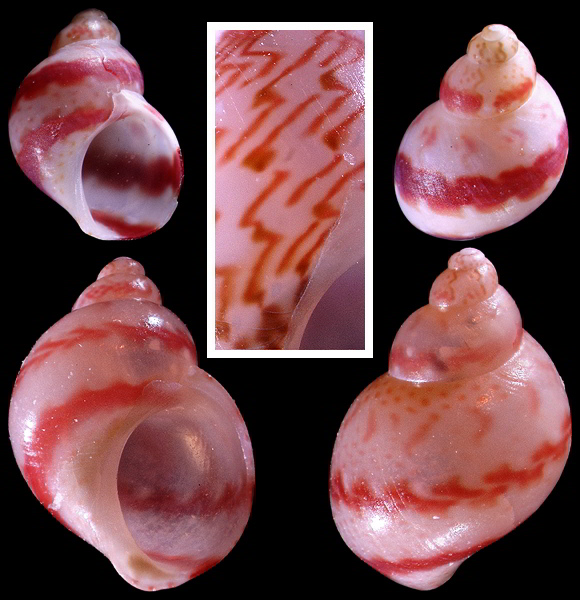
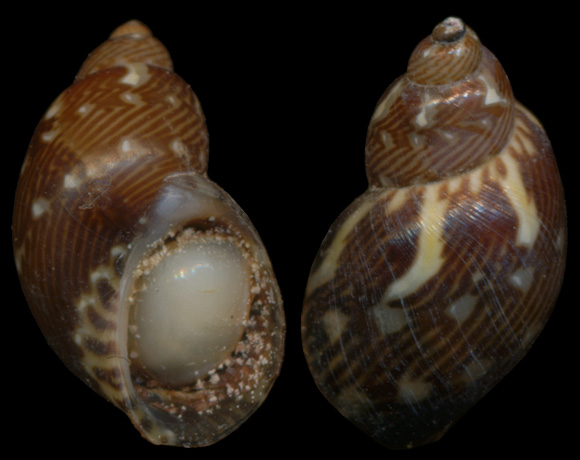
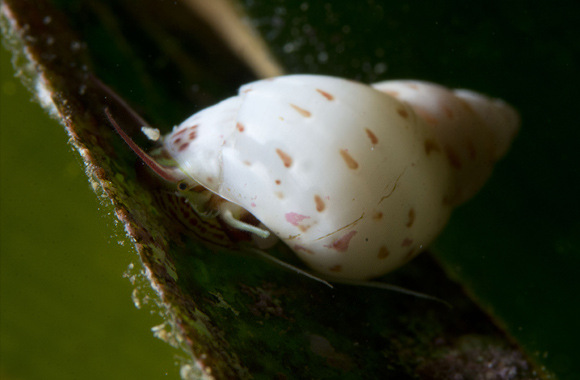
Original picture provided by J. Regàs – (CC BY-NC-SA).

The operculum of speciosa. Left: the outer face, slightly pointed posteriorly; right: the inner face, with the paucispiral nucleus carved in anterior position; top: the operculum seen from labral side; bottom: the same, seen from columellar side.